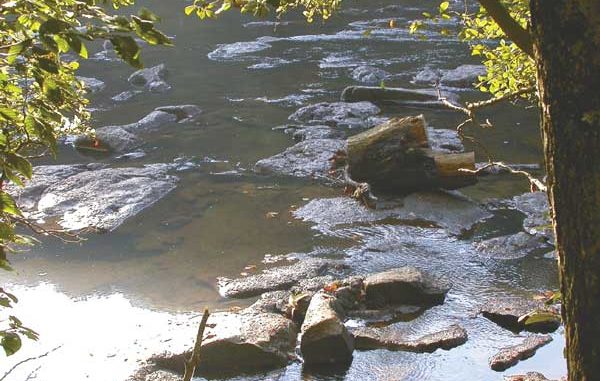
Trout streams flowing through North Carolina’s mountains are at the lowest levels they’ve been in years, the result of a persistent drought that has affected this region and the entire state during 2007.
One veteran fisher in Swain County said Deep Creek, a popular stream in the Great Smoky Mountains National Park, is the lowest he’s seen it in 50 years of fishing.
While low-water levels have not necessarily affected trout fishing, it has created some problems for fishers. Anglers fishing the usually well-stocked delayed-harvest streams are seeing fewer fish this season because of the drought.
The N.C. Wildlife Resources Commission cut the number of trout scheduled to be stocked in October for the opening of the delayed-harvest fishing season because stream levels were so low.
Kyle Briggs, fish production coordinator for the WRC, said stocking rates were reduced by 50 percent.
“We decided to reduce the number of trout stocked until conditions improve,” he said after carefully monitoring water levels and aquatic habitat in delayed-harvest waters for two months,
“We try to match our stocking rates to habitat conditions in individual streams. Because stream levels are extremely low right now, it makes sense for us to adjust trout stockings accordingly.”
For the 2007-2008 season, biologists had planned to stock 213,000 trout, a mix of rainbow, brown and brook. This number will still be stocked in mountain streams when stream conditions permit.
In Great Smoky Mountain Park streams, water levels are so low in some streams that anglers were calling for closure of park streams until conditions improve.
Steve Moore, the park’s chief biologist, said while low, warm water has had a significant effect on trout, it doesn’t mean streams should be closed.
“We aren’t seeing fewer trout,” he said, “just smaller ones.”
Moore said a lot of larger fish have been lost because of low water, but the absence of larger fish has improved habitat for young-of-the-year trout.
“It’s not a population change,” Moore said. “It’s a composition change.”
While temperature fluctuations are hardest on big trout, Moore said anglers have little if any impact on fish populations in mountain streams.
“These fish have adapted to survive,” he said.
Based on sheer numbers, Moore said populations can fluctuate 30 to 50 percent during a year.
“Angler catch rates don’t change, even if we lose 50 percent of the fish,” he said.
Shane Buckner of Hunter Banks Company, an Asheville-based outfitter and guide service, said although water levels are low, fishing has been “half-way decent, and we’re booked solid.”
Buckner said his guides concentrate more on tail-water streams when water levels are low.
Kevin Howell of Davidson River Outfitters in Brevard said although the Davidson River and nearby streams are low, low night temperatures keep the water cool, a more important factor for trout survival than low-water conditions. Temperatures at the Davidson were running between 58 and 59 degrees during early October.
During August heat and lack of rain killed more than 103,000 brown and rainbow trout at the Armstrong cold-water hatchery in McDowell County. Most of those fish were scheduled to be stocked for the 2007-2008 season.
The other two cold-water hatcheries, Marion and Bobby N. Setzer Hatchery in Transylvania County, didn’t suffer any substantial losses. Briggs said the Marion and Setzer hatcheries produced enough trout to offset the losses at Armstrong.
“We always build in a buffer to account for some fish mortality, so we plan to move fish among the hatcheries in order to make up for fish we have lost,” he said.
Briggs said the WRC also contacted the Erwin National Fish Hatchery in Tennessee to get extra trout eggs to grow and stock next summer.
Anglers can help sustain trout populations by practicing correct catch-and-release techniques. Use barbless hooks, don’t overplay trout, use a net, and keep the trout in the water as much as possible.
When a trout is stressed, it may take a bit longer for it to recover. Instead of dumping the trout back in the stream, release it in a section of slow-moving water.
Fishers, just as trout do, must learn to adapt to stream conditions.




Be the first to comment